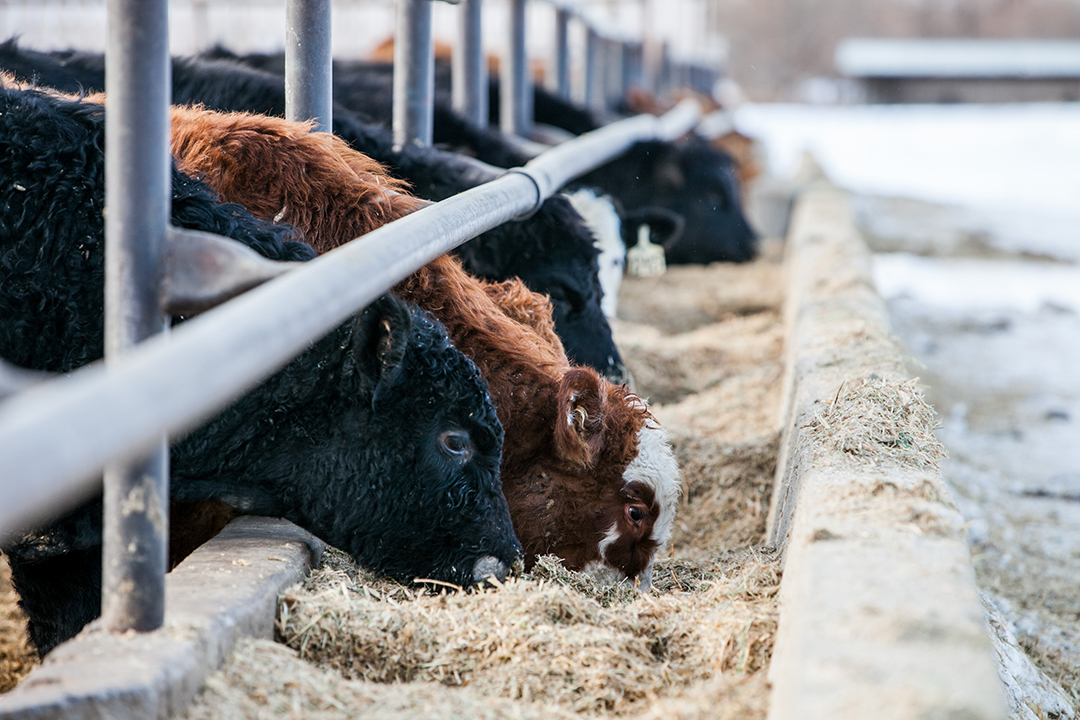
Research aims to improve accuracy of rapid diagnostic tools
Bovine respiratory disease (BRD) is a disease in cattle that accounts for 40 to 75 per cent of animal deaths in some beef cattle feedlots. While there are many causes of BRD, it’s often associated with infection by the bacterium Mannheimia haemolytica (M. haemolytica).
By Jay RabariRecently, isolates of M. haemolytica that are resistant to antibiotic drugs commonly used to treat the disease have appeared. But there’s a catch: these bacterial isolates do not possess any known resistance genes.
“Sometimes [bacterial] isolates are identified that have drug resistance characteristics, yet when you apply molecular tools to look for genes, they aren’t there. That raises the possibility that there are mobile elements involved or novel genes,” says Dr. Janet Hill (PhD), a professor and microbiologist in the Western College of Veterinary Medicine’s Department of Veterinary Microbiology.
Bacteria often trade around plasmids — circular bits of DNA that give its bearer a selective advantage in its environment. Plasmids can encode genes that give the bacterium the ability to break down specific compounds for food, provide ways to survive in the presence of antimicrobial substances, or even turn harmless bugs into pathogens by encoding for nasty toxins.
As part of the effort to identify antibiotic resistance genes, Hill and her team are collaborating with Prairie Diagnostic Services, the provincial veterinary diagnostic laboratory for Saskatchewan. They’re using a mixture of genomic (the genetic code of an organism, including plasmids) and phenotypic (the physical appearance of an organism) methods to characterize M. haemolytica.
“Once we have that information, the sequence of that characteristic [of resistance] can then be incorporated into databases of antimicrobial resistance factors,” says Hill. “We can then search for them specifically in [field] data or design a diagnostic test that would then detect a factor that we know is associated with that resistance phenotype.”
Traditionally, a veterinarian collects specimens from sick animals and sends these samples into a veterinary diagnostic lab where technicians culture the pathogens and physically determine their resistance patterns. This data then helps the veterinarian decide the best antibiotic treatment to use.
“If you want to make a decision about antimicrobial use, you can’t wait around for days and days to get the actual results while the animal gets sicker and sicker,” explains Hill. “The key thing is rapidity. It’s important to do the kind of work this project is doing, which is investigating the possibility of novel or uncharacterized mechanisms of resistance so that it can be added into databases to improve our ability to recognize those factors.”
The possibility of direct DNA sequencing of specimens is being developed as an alternative to traditional methods. How would such real-time diagnostics be beneficial?
For one, it provides rapid and accurate diagnostics for veterinarians and feedlot managers. Nowadays, there are portable DNA sequencing devices small enough to hold in your hand. Animal health team members could use these devices to collect their samples from selected cattle in the feedlot and get DNA sequence data on site.
That data gets analyzed externally against a database, allowing users to quickly determine an antimicrobial resistance profile for a specific animal. A limitation to this method, however, is the database itself: users are unable to identify what’s not in the database, making basic tracking and monitoring of genes in a bacterial population even more important.
Equipped with this information, veterinarians can ensure that antibiotic drugs are being used as effectively as possible, reducing antibiotic resistance and loss of productivity.
This investigation is related to Genomic ASSETS, a Genome Canada-funded program led by WCVM researcher Dr. Cheryl Waldner and Dr. Simon Otto from the University of Alberta. Overall, the ASSETS program is focused on applying genomic methods to the development of timely, accessible veterinary diagnostics that are needed to achieve the goal of tailored, precision antimicrobial use.
The Natural Sciences and Engineering Research Council of Canada (NSERC) is providing financial support for this research project.
Jay Rabari of Estevan, Sask., is a fourth-year student in the College of Medicine’s Department of Biochemistry, Microbiology and Immunology at the University of Saskatchewan. His story is part of a series of articles written by WCVM summer research students.
